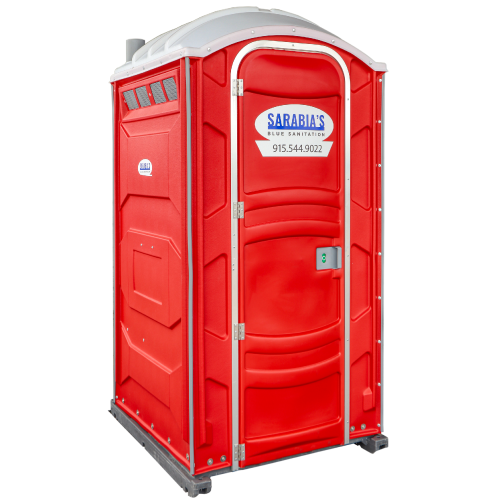
You might remember the scene in the movie North Country, where one of the women workers goes into the portable john—or as they call it, portable Jane— and two of the workers begin pushing the porta-potty while she’s inside. She yells out for them to stop, but they continue pushing it from one side to another until it flips over on one side. This is a total bully move, as the film showcases how some of the guys at the plant would treat the women workers trying to fit in. The girl rolls out covered in—well, what you might imagine she’d be covered with— but she’s also soaked with this blue liquid. This blue liquid is what makes the chemical toilet, chemical. So what is the stuff anyway? We thought we’d take a look at just what this stuff is.
The Initial Deodorizers
The very first porta-potties did not make use of chemicals. At some point, someone realized that it would be a smart move to try and cover up the contents of these portable toilets as much as possible. Of course, you still want to try to avoid looking into the bowl of a portable toilet, as the chemicals don’t completely hide everything. Yet, the chemicals in the chemical toilet are trying to do just that. So the use of chemicals came to use a little bit later. It was quite the leap forward for the chemical toilet industry. The first deodorizers were formaldehyde-based chemical blends that were meant to cover up any waste, mask bad odors.
So the chemicals down there were meant to do a couple of things including:
- Blue dye that hides the appearance of waste
- Fragrance to mask the odor
- Biocides that kill bacteria and microbes
Beginning with Formaldehyde and More
Formaldehyde is a colorless yet quite flammable gas at room temperature and has a strong odor. It was used for a variety of uses throughout and can be found in many different forms and is used for many household products and more. You can find formaldehyde in the resins of composite wood products, building materials and insulation, household products such as glues, permanent press fabrics, paints and coatings, lacquers and finishes. It can also be found in fertilizers and pesticides, preservatives used in some medicines, cosmetics, and more. The chemical is also used in combination with others as a way of embalming bodies of the deceased.
Today, most chemicals in toilets are not formaldehyde. Part of the reason why these were changed was because most wastewater treatment plants can’t process them easily. This is because formaldehyde is a known carcinogen and makes it very difficult to be processed in water plants.
On to the New Chemicals
The new chemicals found in porta-potties are stronger and more efficient chemicals that stop the growth of odor-producing gram-positive bacteria. These chemicals are quite effective in preventing the growth of new bacteria, which means that they are actively working to prevent the smells from growing and becoming more of a problem. The tanks today contain:
- Water: To fill the tank
- Blue dye: mostly for aesthetic purposes
- Fragrance: Help mask the smell
- Surfactants: Help any fragrances dissolve better
- Biocides and enzymes: speed up the decomposition of organic matter.
So formaldehyde was phased out and this has led to the development of a much ‘greener’ solution for porta-potty chemicals. This means a different approach towards what is in the tank. The main goal today is to introduce beneficial enzymes and microbes that eat up all the odor-causing bacteria. This is a more effective method because instead of simply trying to mask it, the chemicals are actually trying to destroy them.
The Effects of Weather On the Tanks
Different weather conditions can affect the contents of the tank and how it is disposed of and cleaned. Cold weather, for example, means that there should be a salty brine added in order to prevent it from freezing. While we don’t have that problem much in El Paso, it can happen and does happen in other parts of the country. Dealing with frozen contents of a porta potty is no fun! So that’s why this is avoided, the brine is added to lower the freezing point of the chemical solution. When the weather is hot —something we do see in the Sun City— the odors could be intensified. This is why we increase the chemical to water ratio in the hotter months and ensure that there is plenty of ventilation that allows for better circulation.
Trust The Portable John Experts With Your Toilet Needs
Whether you are running an event or have a construction site, a porta potty might be necessary. It’s important to make sure that you are hiring the best for your needs. Only the portable john experts will make sure the units are clean, functional, and have high-quality chemicals that have been adequately measured. Call Sarabia’s today and get quality service and units for your needs.









